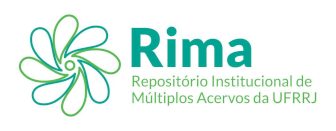Use este identificador para citar ou linkar para este item:
https://rima.ufrrj.br/jspui/handle/20.500.14407/20804| Tipo do documento: | Dissertação |
| Título: | LiDAR orbital aplicado ao monitoramento manejo florestal madeireiro na Amazônia brasileira |
| Título(s) alternativo(s): | Orbital LiDAR applied to monitoring timber forest management in the Brazilian Amazon |
| Autor(es): | Boy, Daniel Joventino Schimidt |
| Orientador(a): | Mendonça, Bruno Araujo Furtado de |
| Primeiro membro da banca: | Mendonça, Bruno Araujo Furtado de |
| Segundo membro da banca: | Monte, Marco Antônio |
| Terceiro membro da banca: | Cysneiros, Vinicius Costa |
| Palavras-chave: | Sensoriamento remoto;GEDI;Manejo florestal de impacto reduzido;Regeneração florestal;Impacto do manejo florestal;Amazônia;Remote sensing;Sustainable Forest management;Forest regeneration;Impact of forest management;Amazon |
| Área(s) do CNPq: | Recursos Florestais e Engenharia Florestal |
| Idioma: | por |
| Data do documento: | 27-Set-2024 |
| Editor: | Universidade Federal Rural do Rio de Janeiro |
| Sigla da instituição: | UFRRJ |
| Departamento: | Instituto de Florestas |
| Programa: | Programa de Pós-Graduação em Ciências Ambientais e Florestais |
| Citação: | BOY, Daniel Joventino Schimidt. LiDAR orbital aplicado ao monitoramento manejo florestal madeireiro na Amazônia brasileira. 2024. 26 f. Dissertação (Mestrado em Ciências Ambientais e Florestais) - Instituto de Florestas, Universidade Federal Rural do Rio de Janeiro, Seropédica, RJ, 2024. |
| Resumo: | O LiDAR, se tornou uma ferramenta inovadora nas ciências florestais, permitindo a coleta de dados detalhados sobre a estrutura da vegetação e a quantificação de estoques florestais. O sistema GEDI (Global Ecosystem Dynamics Investigation) é um exemplo notável dessa tecnologia, que fornece informações cruciais para o manejo florestal sustentável e a conservação da biodiversidade. Este estudo visa avaliar a sensibilidade do GEDI em relação às variações na estrutura da floresta associadas ao manejo florestal madeireiro na Amazônia brasileira. Este trabalho foi conduzido em duas UPAs manejadas nas unidades de conservação Floresta Nacional de Caxiuanã (Manejo em 2018) e Floresta Estadual do Paru (Manejo em 2014), na Amazonia. Os índices PAI (Plant Area Index) e COVER (Cobertura do dossel) do Level2b do GEDI foram utilizados para comparar grupos de amostras com e sem abates nas duas UPAs. O teste não paramétrico de Mann – Whitney foi utilizado para comparar a mediana dos grupos de amostras. Os resultados revelaram diferenças significativas entre as duas UPAs. Na Floresta Nacional de Caxiuanã, os índices de COVER e PAI foram significativamente maiores no grupo sem abate (COVER: 0,84; PAI: 3,71) em comparação ao grupo com abate (COVER: 0,78; PAI: 3,04), com p-valores indicando diferenças estatísticas significativas entre grupos (p-valor=1.467e-08 para COVER e p-valor=1.547e-08 para PAI). Em contraste, na Floresta Estadual do Paru, as diferenças entre os grupos foram menos pronunciadas, com valores semelhantes para ambos os grupos (COVER: 0,85 sem abates; 0,84 com abates; PAI: 3,83 sem abates; 3,80 com abates), sugerindo que a floresta manejada mais recentemente em Caxiuanã ainda está em estágio de regeneração, processo que se encontra mais avançado na Flota do Paru. A análise dos dados do GEDI demonstrou a capacidade dessa tecnologia em captar as nuances da estrutura da vegetação e a influência do manejo florestal na densidade do dossel. Os resultados indicam que o Lidar GEDI é eficaz em capturar as variações de cobertura e densidade do dossel florestal. |
| Abstract: | LiDAR has become an innovative tool in forest sciences, allowing the collection of detailed data on the accumulation structure and quantification of forest stocks. The GEDI (Global Ecosystem Dynamics Investigation) system is a notable example of this technology, which provides crucial information for sustainable forest management and biodiversity conservation. This study aims to evaluate the sensitivity of GEDI in relation to variations in forest structure associated with timber forest management in the Brazilian Amazon. This work was conducted in two UPAs managed in the Caxiuanã National Forest (Managed in 2018) and Paru State Forest (Managed in 2014) conservation units, in the Amazon. The PAI (Plant Area Index) and COVER (Canopy Cover) indices from GEDI's Level2b were used to compare groups of samples with and without felling in the two UPAs. The non-parametric Mann – Whitney test was used to compare the median of the sample groups. The results revealed significant differences between the two UPAs. In the Caxiuanã National Forest, the COVER and PAI indices were significantly higher in the group without slaughter (COVER: 0.84; PAI: 3.71) compared to the group with slaughter (COVER: 0.78; PAI: 3.04 ), with p-values indicating significant statistical differences between groups (p-value=1.468e-08 for COVER and p-value=1.548e-08 for PAI). In contrast, in the Paru State Forest, differences between groups were less pronounced, with similar values for both groups (COVER: 0.85 without slaughter; 0.84 with slaughter; PAI: 3.83 without slaughter; 3. 80 with fellings), suggesting that the forest managed most recently in Caxiuanã is still in the regeneration stage, a process that is more advanced in Flota do Paru. Analysis of GEDI data demonstrated the ability of this technology to capture the nuances of vegetation structure and the influence of forest management on canopy density. The results indicate that GEDI Lidar is effective in capturing variations in forest canopy cover and density. |
| URI: | https://rima.ufrrj.br/jspui/handle/20.500.14407/20804 |
| Aparece nas coleções: | Mestrado em Ciências Ambientais e Florestais |
Se for cadastrado no RIMA, poderá receber informações por email.
Se ainda não tem uma conta, cadastre-se aqui!
Arquivos associados a este item:
| Arquivo | Descrição | Tamanho | Formato | |
|---|---|---|---|---|
| 2024 - Daniel Joventino Schimidt Boy.Pdf | 1.4 MB | Adobe PDF |  Abrir |
Os itens no repositório estão protegidos por copyright, com todos os direitos reservados, salvo quando é indicado o contrário.

